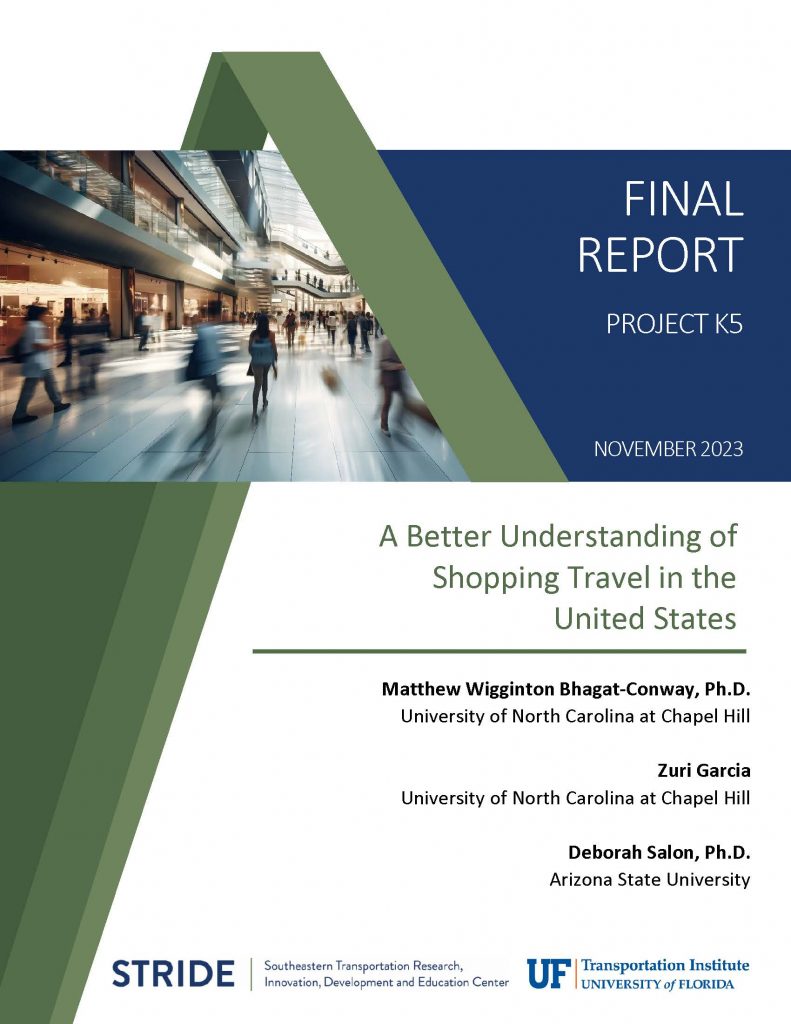A Better Understanding of Shopping Travel in the U.S.
Research Team
Matthew Wigginton Bhagat-Conway, Ph.D. (UNC Chapel Hill)
UTC Project Info
Final Report
Final Technology Transfer Report
What is the current issue? How we shop is changing, with more and more shopping being done online—even for groceries and restaurant meals. These changes could impact congestion and travel demand either positively or negatively, depending on how deliveries are conducted. In order to understand the impacts of online shopping on congestion, it is first necessary to understand the congestion impacts of the in-person shopping trips they may be replacing. Traditionally, the overall amount of shopping travel is estimated either by adding up the mileage of trips that survey respondents reported as being for shopping purposes, or by computing the round-trip distance from home to store. However, much shopping occurs on the way to or from other destinations, and may add very little mileage to these trips. This project will use geocoded travel survey data to assess how many “out-of-the-way” miles are driven for in-person shopping. This more accurate understanding of shopping travel is an important baseline to evaluate the congestion effects of a shift to online shopping. Delivery vehicles cause congestion, but it is unclear if they cause more congestion than the in-person shopping trips they may be replacing. By understanding the congestion effects of in-person shopping, future research can compare congestion outcomes from delivery services with in-person shopping.
What will the research produce? This project will help provide a concrete understanding of how a shift to online delivery services will impact congestion. Since this shift is already occurring, understanding its effects is critical for policy and infrastructure decisions in urban areas going forward. The final product of this project will be estimates of the mileage generated by shopping trips, disaggregated by location and time of day, and published in a peer-reviewed scientific outlet as well as made available open-access through the UNC library to encourage use by practitioners
